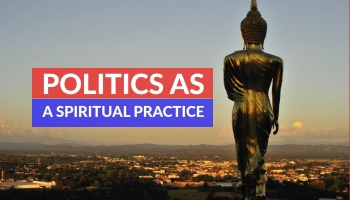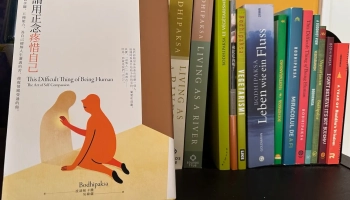
[ad_1]
“Nothing in the world is worth having or worth doing unless it means effort, pain, difficulty…” – Theodore Roosevelt
That’s one way of looking at things. The less popular theory, especially in the U.S., is do less to achieve more. Neither is 100% right or wrong. Strike a balance. Be effortless in meditation and swiftly move toward greater success.
Studies show that work productivity dramatically drops after 50 hours of work each week, yet half of Americans admit to working more than that. Technology isn’t helping matters. Continuous access to the Internet, text, email and phone keep us constantly connected to work.
The good news is research reveals increased productivity, enhanced problem-solving, improved focus and memory can be initiated by learning to meditate. Which sounds like an excellent solution – if it wasn’t for the widespread misconception that meditation is difficult and requires a person to empty their mind of thought.
These three fundamentals of meditation begin to explain how easy meditation is and dispel a common myth: meditation is hard work.
Three Core Meditation Principles
- The goal of meditation is not to eliminate thought.
Meditation is not a process to empty or silence the mind. The goal of meditation is to simply notice thoughts as they enter your mind. Just as you may glance and notice your reflection in a window and continue walking, you will notice thoughts in meditation. The objective is to notice thoughts without stopping to analyze or judge them. - Meditation is a de-stressing program.
In meditation the body releases stress, fatigue, toxins and receives a deep level of rest. This release of stress during meditation causes an increase in the body’s activity and a corresponding increase in mental activity. Therefore, thoughts are a form of stress release. - Thoughts during meditation are an indication stress has been released.
Rather than allowing thoughts to be source of frustration, celebrate them. Every time you think a thought in meditation, it is a sign that physical or emotional stress has been released.
Easy Mantra Meditation
One of the simplest, most accessible and powerful meditation techniques is mantra meditation.
A mantra is a meditation tool, or vehicle, that allows you to move from mental activity to more refined levels of thinking. It is similar to a thought, but it has no story to keep you at the thinking level of the mind. Its purpose is to shift awareness from active thoughts to an inner realm of silence that exists between each thought. The key idea here is “shift awareness.”
For this short meditation, you will use the universal mantra So Hum, which loosely means “I am.” Remember, thoughts will arise. Rather than allowing your awareness to follow a trail of thought, notice the thought and shift your awareness back to the mantra So Hum. Ready?
Follow these how-to meditation instructions for the next two minutes, or experience a guided So Hum mantra meditation video.
- Make yourself comfortable and close your eyes.
- Silently think the mantra So Hum inside your mind.
- Inhale as you think So. Exhale as you think Hum.
- When thoughts take your awareness away from the mantra, notice the thought and gently bring your awareness back to the mantra So Hum.
- Continue silent repetition of the mantra for the duration of the meditation.
- When you are finished, release the repetition of the mantra.
- Softly open your eyes.
Did thoughts arise? Likely. Did you notice the thoughts and come back to the mantra? If you did, great! If you aren’t sure, read this article that describes the only two things you can do wrong in meditation. Plus, experience a real-time exercise that will inform you if you meditated correctly.
The process of meditation is incredibly simple. If you try meditation and find it painful, difficult or frustrating chances are you are expecting to silence your mind. Let me reassure you. You will always have thoughts. Thoughts are normal. Don’t judge yourself for the natural experience of thoughts or attempt to force the process. That only creates more thoughts and more stress.
Work Smarter Not Harder
Meditation is a remarkable tool, one of the few practices that truly fulfill the promise: work less to gain more. As you practice regularly, you will become more comfortable with the process. You will become increasingly confident that you are meditating correctly and will start to notice scientific benefits (many directly correlated with success), such as:
- Increased mental strength and focus
- Increased memory retention and recall
- Improved cognitive skills and creative thinking
- Improved decision making and problem solving
- Improved information processing
- Greater ability to ignore distractions
- Help to manage ADHD
If you would like to meditate with community and be part of a ripple effect of collective coherence spreading peace, harmony, joy and loving kindness out to the world, click here now.
[ad_2]
Source link







